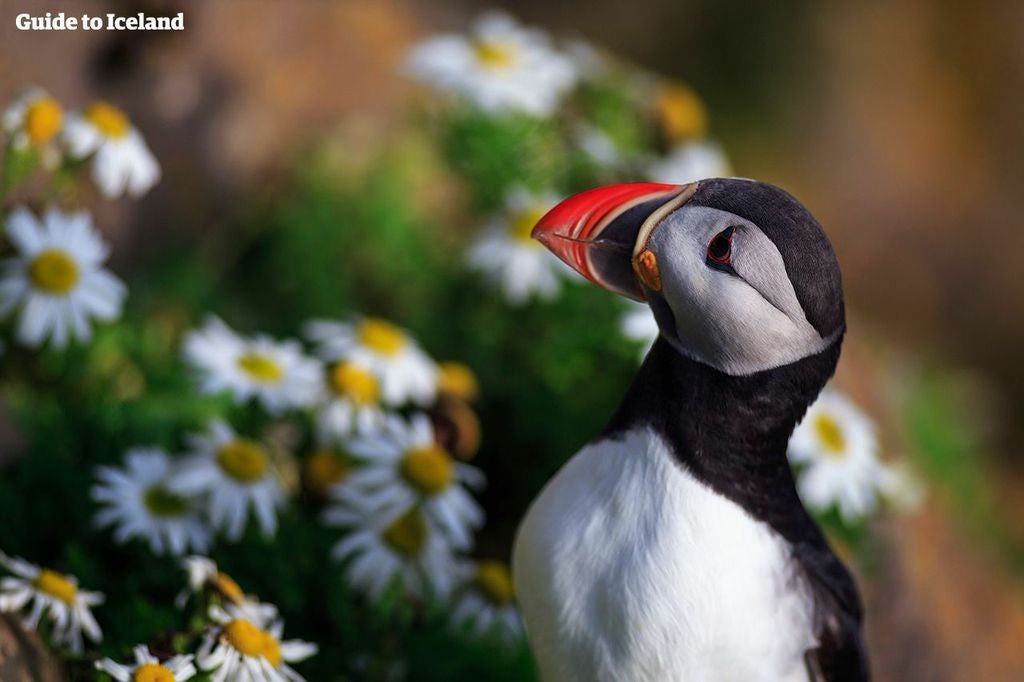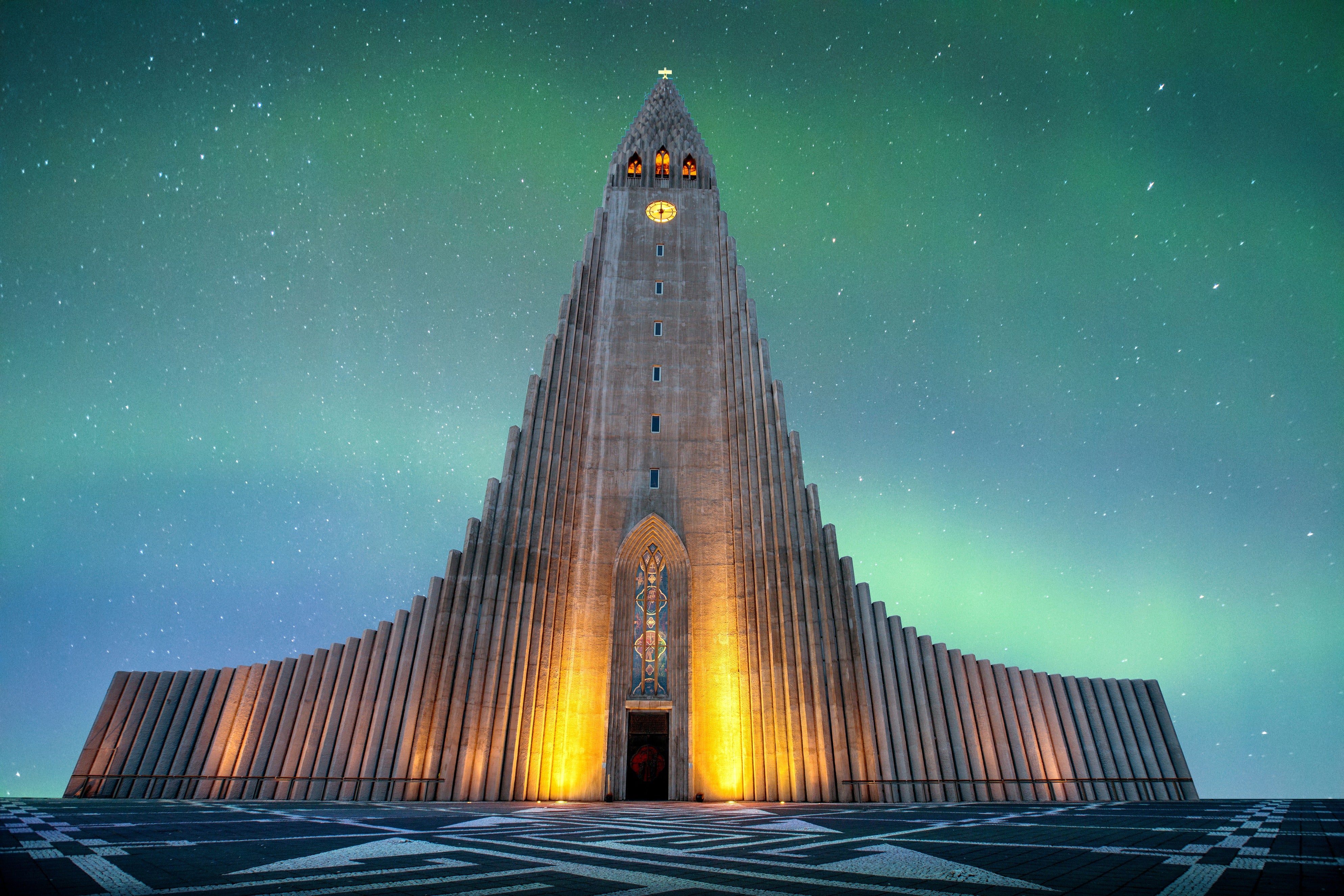
Iceland’s old wives’ tales are more than superstition; they’re a window into the island’s past. These stories, passed from one generation to the next, helped people explain the strange and often harsh realities of their environment. In a country shaped by fire and ice, such tales became part of everyday life.
Some old wives’ tales feel harmless or quirky, while others carry deeper warnings. They touch on everything from the weather to what not to do on certain days. Many reflect a quiet belief in unseen forces and the power of nature. In Iceland, even the wind can feel like it’s listening.
Why You Can Trust Our Content
Guide to Iceland is the most trusted travel platform in Iceland, helping millions of visitors each year. All our content is written and reviewed by local experts who are deeply familiar with Iceland. You can count on us for accurate, up-to-date, and trustworthy travel advice.
These tales haven’t vanished. You’ll still hear old wives’ tales in rural communities or school plays. They’re also featured in many culture tours in Iceland, where guides bring old beliefs to life.
They’re part of the island’s living memory, offering a glimpse of how people once found comfort, meaning, or caution in the everyday.
Quick Facts on Iceland's Old Wives' Tales
-
Iceland’s old wives’ tales arose from remote living, harsh weather, and a need to pass on wisdom through storytelling.
-
From fertility rituals to warnings about whistling indoors, the tales mix ordinary acts with deeper meaning.
-
Many tales reflect nature’s rhythm, warning against actions that might upset seasonal or spiritual balance.
-
Though not always taken literally, these stories linger in Icelandic habits, tourism, and cultural pride.
-
Old wives’ tales connect modern Icelanders to their history, offering insight into life shaped by land, weather, and belief.
The Origins of Icelandic Folklore and Superstition
Iceland’s old wives’ tales didn’t appear out of nowhere. They were born from a mix of isolation, weather, and imagination. In a land with few people and endless silence, stories helped fill the long winters and make sense of the unknown. These tales weren’t just told for entertainment, they were tools for survival, passed from parent to child by firelight.
How Isolation Shaped Icelandic Storytelling
For centuries, Icelanders lived scattered across farms, cut off by mountains, rivers, or snow. In these quiet homes, old wives’ tales served as both comfort and warning. Without books or schools in the early days, storytelling became the way knowledge was shared. People remembered what to do and what not to do by listening to those who came before them.
From Norse Myth to Everyday Life
Many Icelandic old wives’ tales have roots in Norse belief, but over time, they took on a more local shape. The mythical and the everyday blended, until even daily habits carried traces of something old.
- Read more: Folklore in Iceland: The Complete Guide
- Learn about: Vikings and Norse Gods in Iceland
Exploring Iceland’s Old Wives’ Tales
 Passed down through generations, Iceland's old wives’ tales reflect the island’s deep connection to nature, unseen forces, and everyday survival. These bits of inherited wisdom once guided how people approached the seasons, guarded their homes, navigated love, and respected the hidden world around them.
Passed down through generations, Iceland's old wives’ tales reflect the island’s deep connection to nature, unseen forces, and everyday survival. These bits of inherited wisdom once guided how people approached the seasons, guarded their homes, navigated love, and respected the hidden world around them.
Some may sound strange today, but they reveal how Icelanders made sense of a mysterious landscape.
Iceland’s Old Wives’ Tales About Seasonal Superstitions
A lot of Iceland’s old wives’ tales revolve around the seasons. Icelandic life has always been tied closely to nature, so it’s no surprise that people once believed certain actions could anger the weather or bring misfortune. These seasonal superstitions were passed along with the same weight as advice, and often taken just as seriously.
Don’t Knit on the Doorstep – It Might Delay Summer
One of Iceland’s more curious old wives’ tales warns against knitting on the doorstep before summer arrives, as it’s said to prolong winter. The belief likely stems from a mix of symbolism and practicality, discouraging idleness during crucial spring preparation months and showing respect for seasonal transitions.
In farming communities where weather meant survival, even small actions were thought to influence nature’s timing.
Leave Your Rake Tines – Else It Might Rain
A popular weather superstition in rural Iceland: if you leave your rake (or pitchfork) with its prongs pointing upward, it’s believed to summon rain. Farmhands and children were often told to lay tools flat to avoid “asking the sky for water”—a small ritual of respect toward nature’s balance.
On New Year’s Eve, Watch for Cows That Speak
On New Year’s Eve at midnight, Icelandic folklore warns that cows gain the ability to speak, but hearing them can drive a person mad. The tale suggests that animals might reveal deep truths no human is meant to hear, and those who listen risk illness, insanity, or silence.
Rooted in beliefs about liminal times and hidden forces, the superstition reflects a deep cultural caution around nights when the boundary between worlds grows thin.
Icelandic Old Wives’ Tale on Sound and Superstition
Everyday actions and sounds acquired special meaning in Icelandic folk tradition. These tales emphasize everyday awareness and respect for subtle forces at work in the home and environment.
Knock on Wood and Say 7-9-13 to Repel Bad Luck
In Iceland, it's customary to knock three times while saying the numbers 7, 9, 13 (sjö, níu, þrettán) to ward off bad luck. This ritual is believed to cancel out jinxes and prevent misfortune.
For instance, if someone says they've never received a parking ticket, just uttering it is thought to tempt fate. To stop the "inevitable" from happening, Icelanders knock three times and say 7-9-13. It's a tradition still widely practiced today, and you're likely to witness it in everyday conversations with locals.
Icelandic Old Wives' Tales on Elves and Unseen Beings
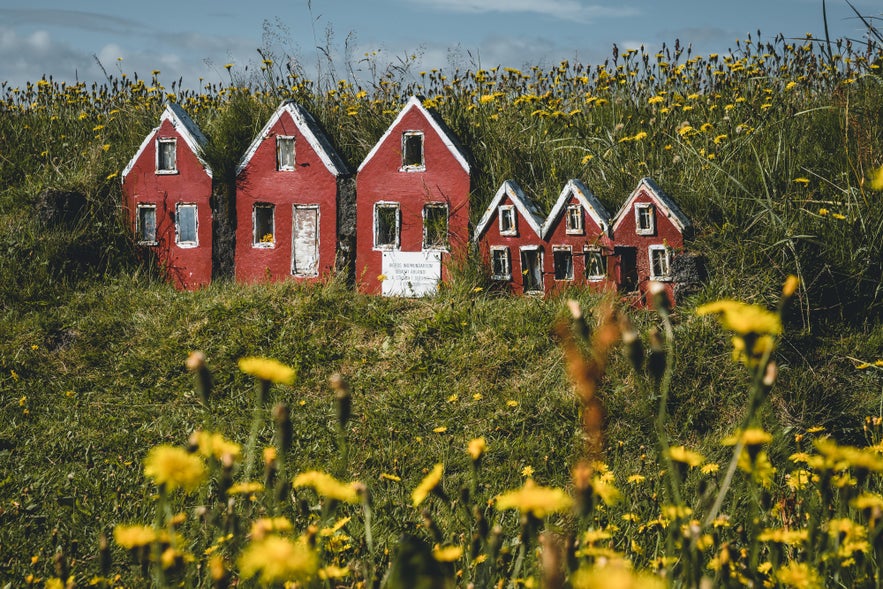 Some of the most memorable Icelandic old wives’ tales involve forces you can’t see. Spirits, elves, and hidden beings are believed to live quietly among the rocks and hills. These tales remind people to move with care and respect the land, because something else might be watching.
Some of the most memorable Icelandic old wives’ tales involve forces you can’t see. Spirits, elves, and hidden beings are believed to live quietly among the rocks and hills. These tales remind people to move with care and respect the land, because something else might be watching.
Never Disturb an Elf-Stone
According to Iceland’s old wives’ tales, certain lava rocks or boulders are not just stones, they’re homes. The Huldufolk, or hidden people, are said to live inside them. Disturbing these stones can bring bad luck, strange accidents, or even illness. Many Icelanders still avoid moving such rocks, just in case the stories are true.
Old wives’ tales about elves aren’t just relics of the past. In modern Iceland, roads have been rerouted, and construction delayed, all out of concern for elf dwellings. Some people claim to have seen the hidden folk. Others don’t believe, but still won’t take the risk. That quiet caution says a lot.
Don’t Sit at a Crossroads on Midsummer Night
On Midsummer Night, known in Iceland as Jonsmessa, folklore warns against sitting at a crossroads, a place where the veil between worlds is said to thin. According to tradition, elves and hidden people appear at these crossings and may offer tempting gifts like gold or food.
But accepting anything can lead to madness or misfortune. The tale reflects deep-rooted beliefs about respecting unseen forces and avoiding places where their influence is strongest.
- See also: Mythical Walk of Reykjavik, with the Elves, Trolls, and Mythical Beings
- Read also: The Elves in South Iceland - Icelandic Folklore
Iceland’s Old Wives’ Tales on Love and Fertility
Not all old wives’ tales in Iceland are warnings. Some carry hope, curiosity, or even tenderness. These stories often circle around love, birth, and the mystery of what lies ahead. They reflect how people once turned to small rituals in search of answers or protection in life’s most personal moments.
Nine Cows and a Gray Bull – A Quiet Moment for a Wish
In Icelandic folk tradition, spotting nine cows lying down with a single gray bull standing by the barn door is a sign of luck. It’s said that if you witness this rare scene, you’ll be granted a wish. What you wish for is up to you. Some might hope for good weather or a strong harvest, while others might quietly wish for love.
Burying the Placenta Under the Fireplace for Protection
According to Iceland’s old wives’ tales, some families would bury a newborn’s placenta beneath the fireplace. It was believed this act tied the child to the warmth and safety of the home. The fireplace symbolized life, nourishment, and family. In a world full of natural dangers, such traditions brought peace of mind and a sense of spiritual protection.
Animals in Iceland’s Old Wives’ Tales
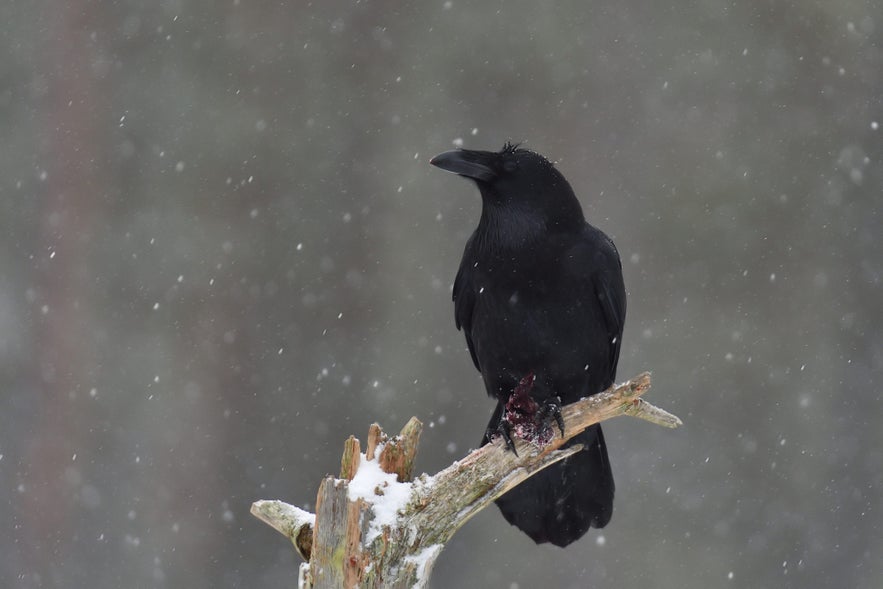 Icelandic old wives’ tales don’t just involve people or spirits; they often include the animals that shared the land. From birds that brought omens to creatures tied to legends, these stories reveal how deeply Icelanders watched and respected the natural world around them.
Icelandic old wives’ tales don’t just involve people or spirits; they often include the animals that shared the land. From birds that brought omens to creatures tied to legends, these stories reveal how deeply Icelanders watched and respected the natural world around them.
Birds in Iceland’s Old Wives’ Tales & Folklore
Old wives’ tales in Iceland often looked to the sky for signs. Birds, with their patterns, sounds, and sudden appearances, became quiet messengers of change. Some were tied to the seasons, others to death or luck. Even today, Icelanders may watch a bird’s behavior and wonder what it might mean, just as their ancestors once did.
Kría (Arctic Tern)
The kría, or Arctic tern, was seen as a seasonal messenger, marking the arrival of summer. Believed to bring bad luck if disturbed, especially near its nesting grounds, it was both respected and avoided. Its fierce defense of its chicks was sometimes viewed as a symbol of natural guardianship, a warning not to cross boundaries.
Raven (Hrafn)
The raven has long held a place in Icelandic belief. Deeply tied to Norse mythology, ravens were said to be the eyes and ears of Odin, flying across the world as his messengers.
In old wives’ tales, seeing a raven circle above could be a sign of death or a coming visitor. If it landed on a roof, it might mean news, often serious, was on the way.
Ptarmigan (Rjúpa)
The rjúpa, or ptarmigan, is a familiar sight in Iceland’s snowy winters. According to old wives’ tales, an overabundance of ptarmigan foretold a harsh season ahead. The bird was also considered sacred in some communities. Killing too many wasn’t just unwise; it could upset the balance of nature.
Owl (Ugla)
Owls are rare in Iceland, but when spotted, they carry a strong sense of unease. Their ghostly appearance and haunting calls were believed to signal death or misfortune. In folk belief, they were not just birds of the night but watchers from another realm.
Other Animals in Icelandic Superstition and Folklore
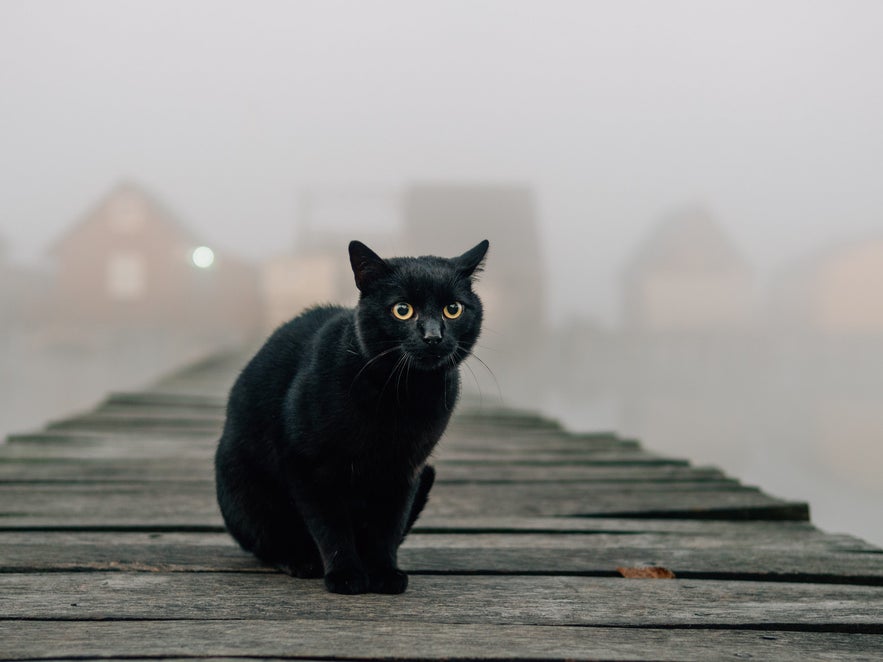 While birds often carried messages from above, land and sea creatures had their own quiet roles in Iceland’s old wives’ tales. Some were seen as omens, others as magical beings in disguise.
While birds often carried messages from above, land and sea creatures had their own quiet roles in Iceland’s old wives’ tales. Some were seen as omens, others as magical beings in disguise.
Whether roaming the hills, slipping through the ocean, or curled beside a hearth, these animals were watched closely, just in case they knew something people didn’t.
Fox (Refur)
Though not commonly seen, the arctic fox still appeared in Icelandic folklore. Some old wives’ tales warned that spotting a fox, especially if it crossed your path, meant misfortune, particularly during a journey.
Foxes were also said to steal milk or strength from livestock, not through teeth or claws, but through strange and quiet magic.
Seal (Selur)
Seals were more than animals in Icelandic waters. Old wives’ tales spoke of selkies, seals that could shed their skins and become human. These tales often carried warnings: don’t marry a stranger who appears suddenly, and never steal a selkie’s skin, or you might trap someone who was never meant to stay on land.
Seals were seen as magical, bound to the sea but briefly part of the shore.
Cat (Köttur)
Cats were familiar figures in Icelandic homes, and the stories about them reflected both affection and fear. Some old wives’ tales said cats could see ghosts or sense danger before it arrived. Treated well, they might bring good fortune.
But the most chilling story is that of the Jólakötturinn, the Yule Cat, a massive creature said to eat children who didn’t receive new clothes before Christmas. The tale served as both a warning and a way to encourage generosity.
Horse (Hestur)
The Icelandic horse was more than a means of travel. Old wives’ tales claimed horses could sense the presence of elves or spirits. If one refused to walk a certain path or acted strangely, people took it as a sign that something unseen was near.
Nightmares, too, had their own creature, the mara, a spirit believed to ride sleeping people and press down on their chests. It’s from this that Icelandic gets the word martrod, or nightmare.
Protective Charms in Iceland’s Old Wives’ Tales
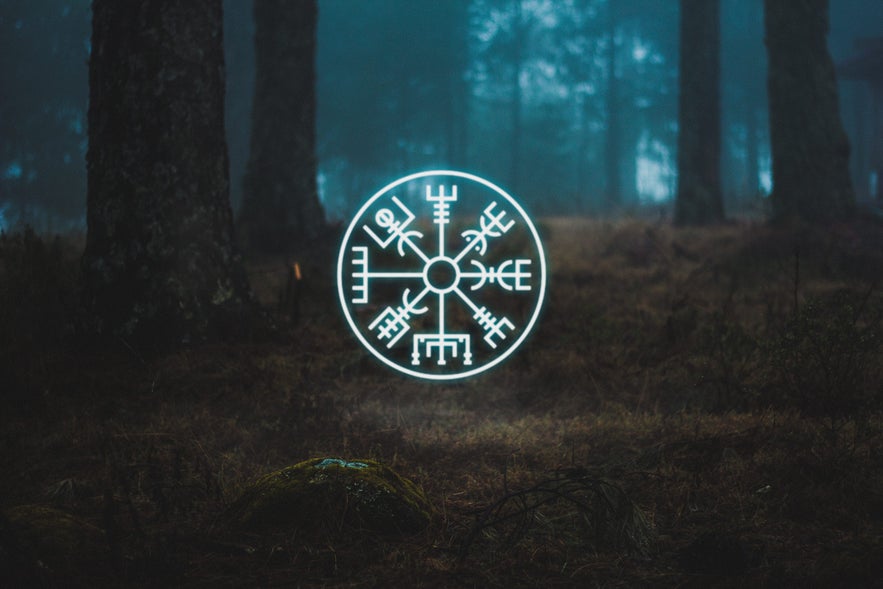 Not all Icelandic old wives’ tales came as spoken warnings. Some were carried quietly, tucked into pockets, drawn by hand, or kept hidden beneath layers of clothing. These small charms and symbols were believed to offer protection, courage, or clarity, especially in times of uncertainty.
Not all Icelandic old wives’ tales came as spoken warnings. Some were carried quietly, tucked into pockets, drawn by hand, or kept hidden beneath layers of clothing. These small charms and symbols were believed to offer protection, courage, or clarity, especially in times of uncertainty.
In a land where the elements could turn quickly, a bit of luck or strength was always welcome.
Stones of Strength and Luck
One common belief centered around stones. Certain pebbles, especially those found near rivers or scattered across lava fields, were said to hold healing or protective power. People carried them while traveling or giving birth, trusting the stone to guard them from harm.
Even now, some Icelanders keep a small stone from a meaningful place as a silent charm. The idea is simple but enduring: stones come from the land, and the land holds memory.
Symbols Drawn to Protect or Guide
There were also symbols, lines, shapes, and signs passed down without fanfare. Some were drawn onto slips of paper, carved into wood, or inked just beneath a shirt’s collar.
These markings, known as galdrastafir, were believed to guide the lost, protect the fearful, or bring love closer. Though many of these designs come from later manuscripts, echoes of their meaning lived on in quiet ways.
Common Charms Remembered in Folklore
A few of these symbols became especially well-known. The Vegvisir, or wayfinder, was said to help someone stay on course, even when the path was unclear. The Aegishjalmur, or Helm of Awe, promised strength and protection against enemies.
Others were more private, simple signs meant to ward off envy or bad luck. Whether drawn in ink or imagined in thought, these quiet marks carried the same hope as any old wives’ tale: that something small might keep the worst away.
Folklore-Inspired Tours and Experiences
Iceland’s folklore isn’t just passed down, it’s experienced. Across Reykjavik and beyond, visitors can step directly into the legends of trolls, elves, and hidden people through thoughtfully curated tours that bring these stories to life.
-
One of the most popular options is the Folklore Walking Tour of Reykjavik with Tales of Trolls, Elves & Hidden People. This tour takes guests through graveyards, the Elfstone, and cultural landmarks. You’ll hear stories of the 13 Yule Lads, learn how trolls differ from elves, and understand how fantasy authors like Tolkien drew inspiration from Iceland’s beauty and sagas.
-
For a deeper journey into Iceland’s countryside, the Magical 5-Hour Horseback Riding Tour with Elves & Folklore offers an unforgettable ride through valleys, lava fields, and elven hills. As you glide on the unique tolt gait of the Icelandic horse, your guide shares stories of elf churches, enchanted rocks, and musical beings said to inhabit the land.
-
Even classic history tours here have a touch of magic. The Small Group Walking Tour of Reykjavik's History & Culture combines insights into Iceland’s architecture, economy, and politics with mentions of folklore, Norse mythology, and modern beliefs. This tour offers a personal look at Reykjavik’s character, from Viking roots to contemporary life.
Whether through mythic landscapes or cultural streetscapes, these experiences invite travelers to see Iceland through a folkloric lens, one where the past still whispers through the land.
Do Icelanders Still Believe in Old Wives’ Tales Today?
Old wives’ tales haven’t disappeared from Icelandic life; they’ve simply taken on new forms. While few people follow them as strict rules, many still treat them with respect or affection.
These beliefs linger in small habits, casual jokes, and the stories told to children or tourists. They’re not forgotten, they’ve just become part of the national character.
Cultural Traditions or Lingering Beliefs?
For some, Iceland’s old wives’ tales are just familiar traditions. For others, they still hold meaning. Many Icelanders won’t admit to “believing,” but they also won’t risk angering elves or tossing out certain rituals. Whether it’s habit, respect, or superstition, these stories continue to shape how people relate to the land and each other.
Superstitions in Modern Tourism
Old wives’ tales are now part of the Icelandic experience for visitors, too. Elf stones are pointed out on tours. Folklore museums showcase magical staves and mystical beliefs. Guides often share these stories with a smile, but the wonder behind them still feels real. For travelers and locals alike, the tales remain a strong part of Iceland’s culture.
- Learn more: Is This Rock the Home of the Icelandic Elves?
- See also: The Best Museums in Iceland
- Read more: Ultimate Guide to Cultural Tours in Iceland
Why Iceland’s Old Wives’ Tales Still Matter
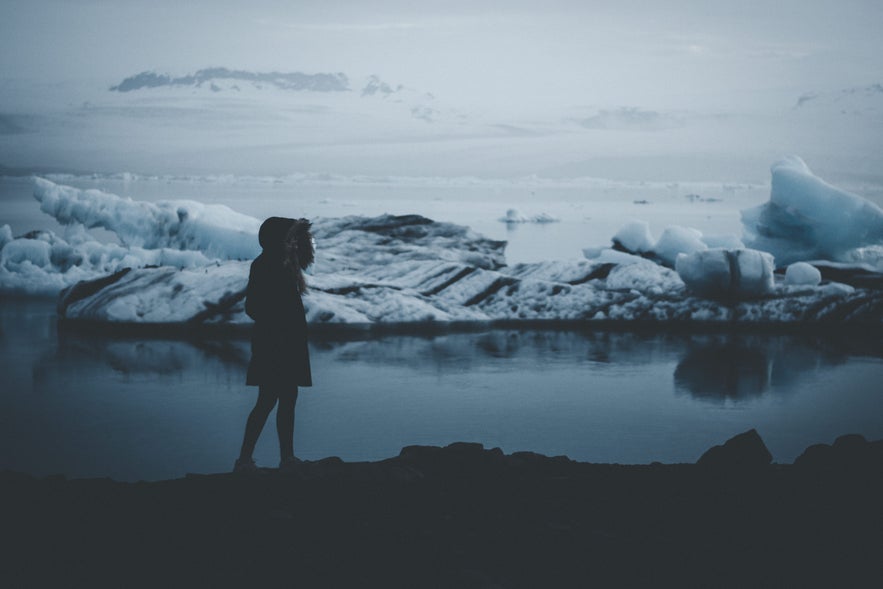
Old wives’ tales in Iceland are more than old sayings; they’re echoes of how people once lived, feared, and hoped. In a land shaped by fire, ice, and isolation, these stories made sense of the unknown. They gave meaning to everyday acts and offered comfort in a world where nature ruled.
Today, they’re not just part of the past. These tales still breathe through traditions, superstitions, and storytelling. Whether passed down in families or shared with visitors, they remain a quiet part of daily life. Even in modern Iceland, few people dismiss them completely.
That’s the power of Iceland’s old wives’ tales. They don’t vanish. They evolve, folding themselves into memory, folklore, and identity. And in Iceland, where the land itself seems to whisper, those old voices are never too far away.
So the next time you visit Iceland, listen closely to the land, the stories, and the quiet warnings. You might just walk away with an old wives’ tale of your own.
Did any of these tales surprise you? Maybe one made you stop and reflect for a moment. Or reminded you of something you've heard before. Share your thoughts, stories, or questions in the comments. We’d love to hear from you!




